Book Layout Design
Background
Written in the time of Caesar Augustus, Vergil’s Aeneid is a mythological history of the founding of Rome. The work represents the perfection of the epic poetry form. Vergil’s primary goal was to elevate the perception of Roman culture to be on par with ancient Greece. Secondarily, the epic solidifies the revisionist view of Roman exceptionalism and effectively demonizes both Greece and Carthage, Rome’s main cultural rivals.
The story follows a hero’s journey from the fall of Troy to the rise of Rome as a powerful city-state. From a design perspective, this spread could utilize a classical theme, taking influence from statuary, pottery, columns, arches, and architectural features. There could also be a heavy nautical theme, as the majority of the story features the hero sailing to various locations.
Being written in Latin, this work could be presented as two mirrored pages – one in Latin and one in English. There could be captions and footnotes detailing the connotation and subtext of the subtler words and phrases
The target audience will be mostly high school and college students who are studying classical literature. The Latin text is challenging and awkward to translate, which is fundamental to the study of Vergil. Including the various plot points and extra information in captions will help students and other readers to keep track of the over-arching story. The captions also help when skimming the text in search of some specific passage or section.
The project will take approximately four weeks to complete, with weekly update meetings on Tuesdays. The major goals are:
Find an appropriate version of the text
Find appropriate imagery to accompany text
Write a few summary captions for each page
Select a colour scheme and typeface
Arrange the page structure based on a grid system.

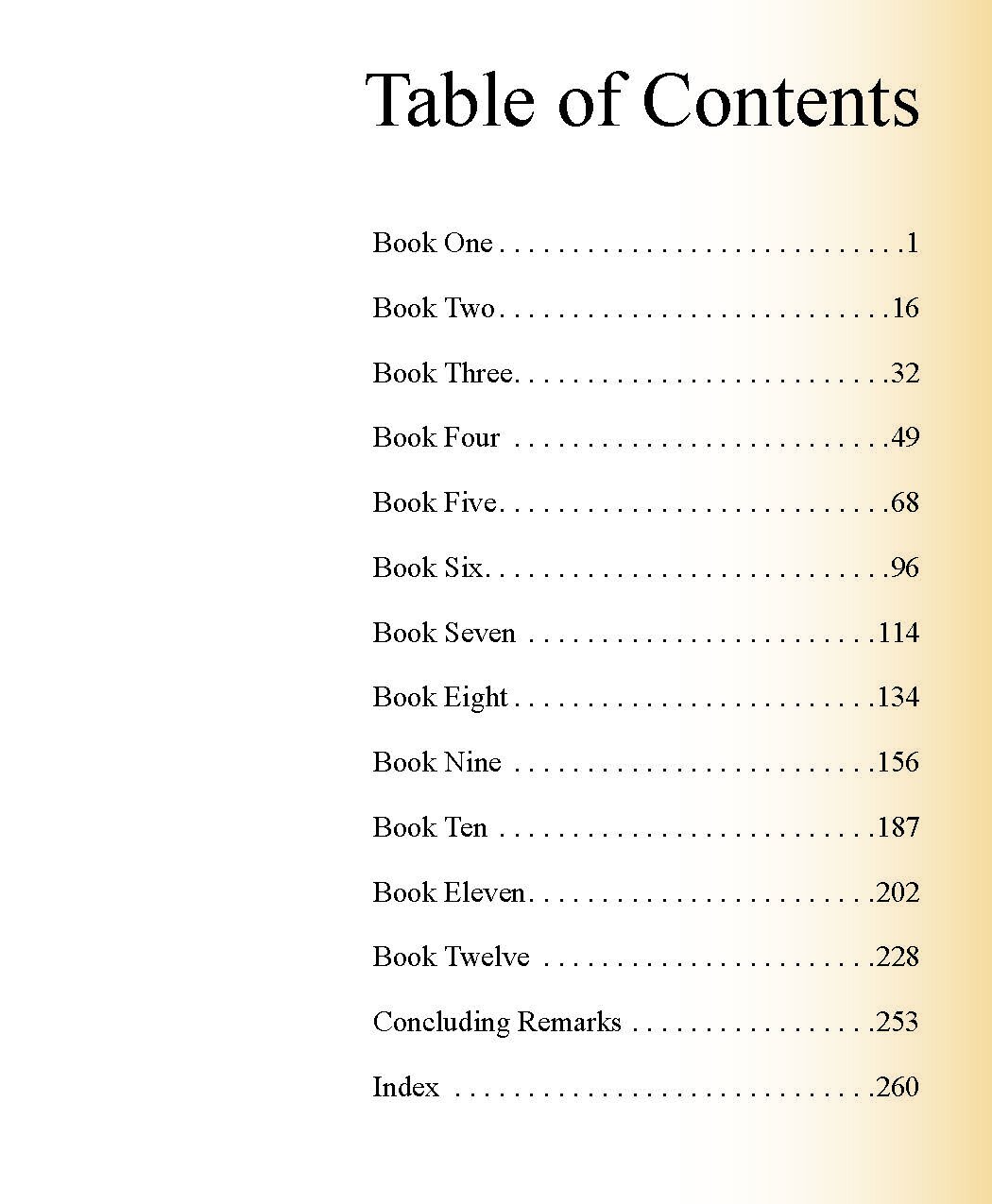
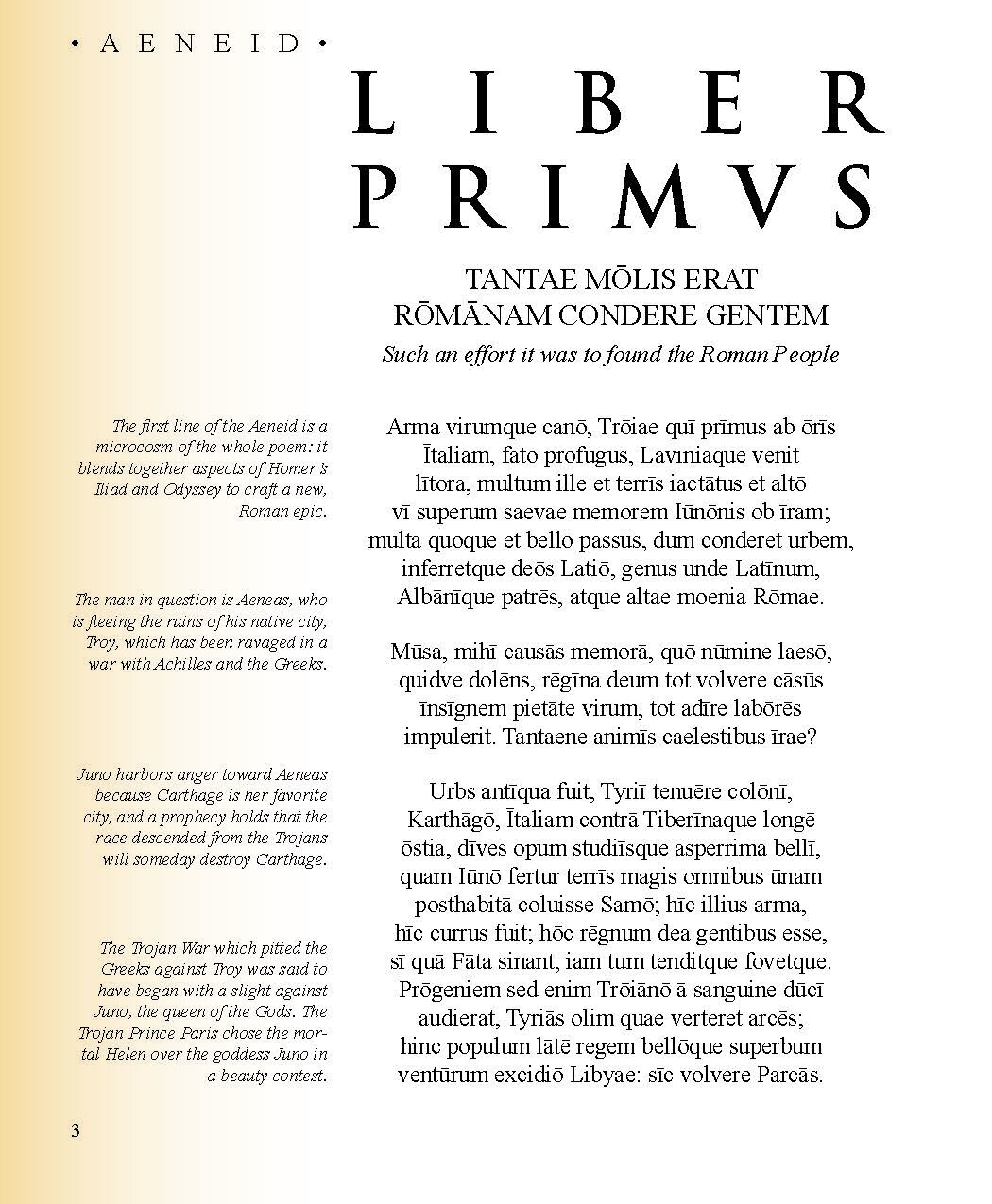
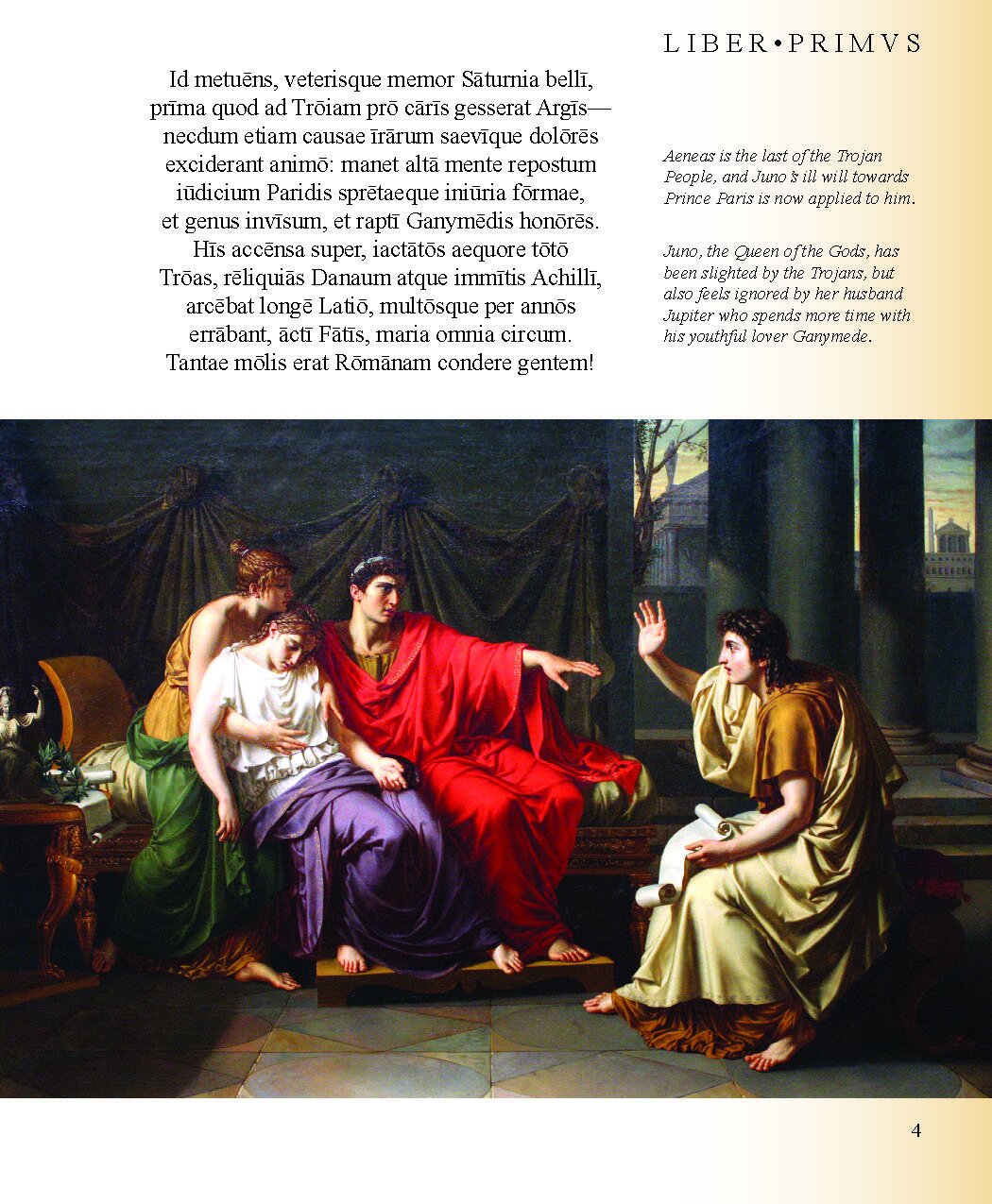
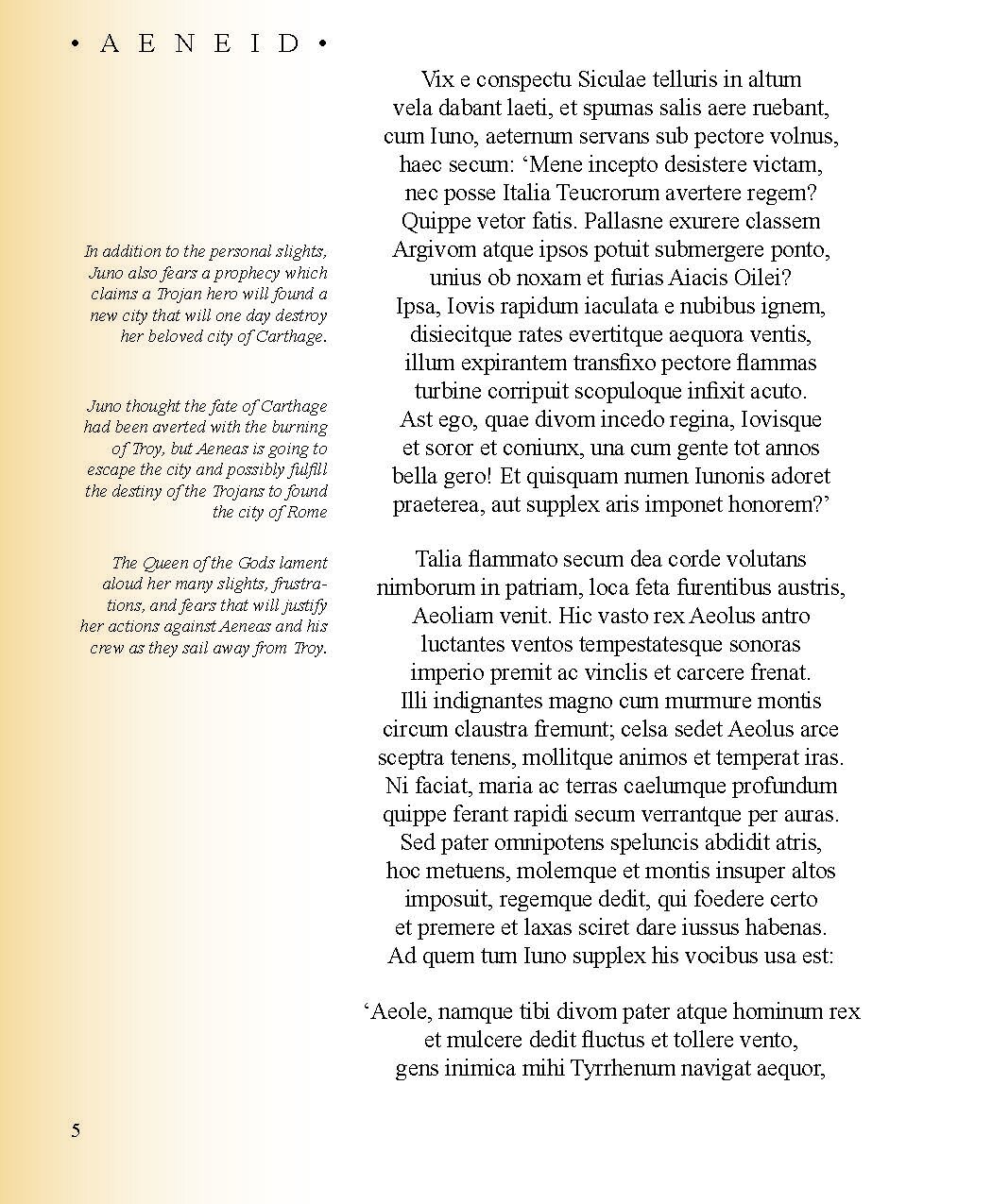
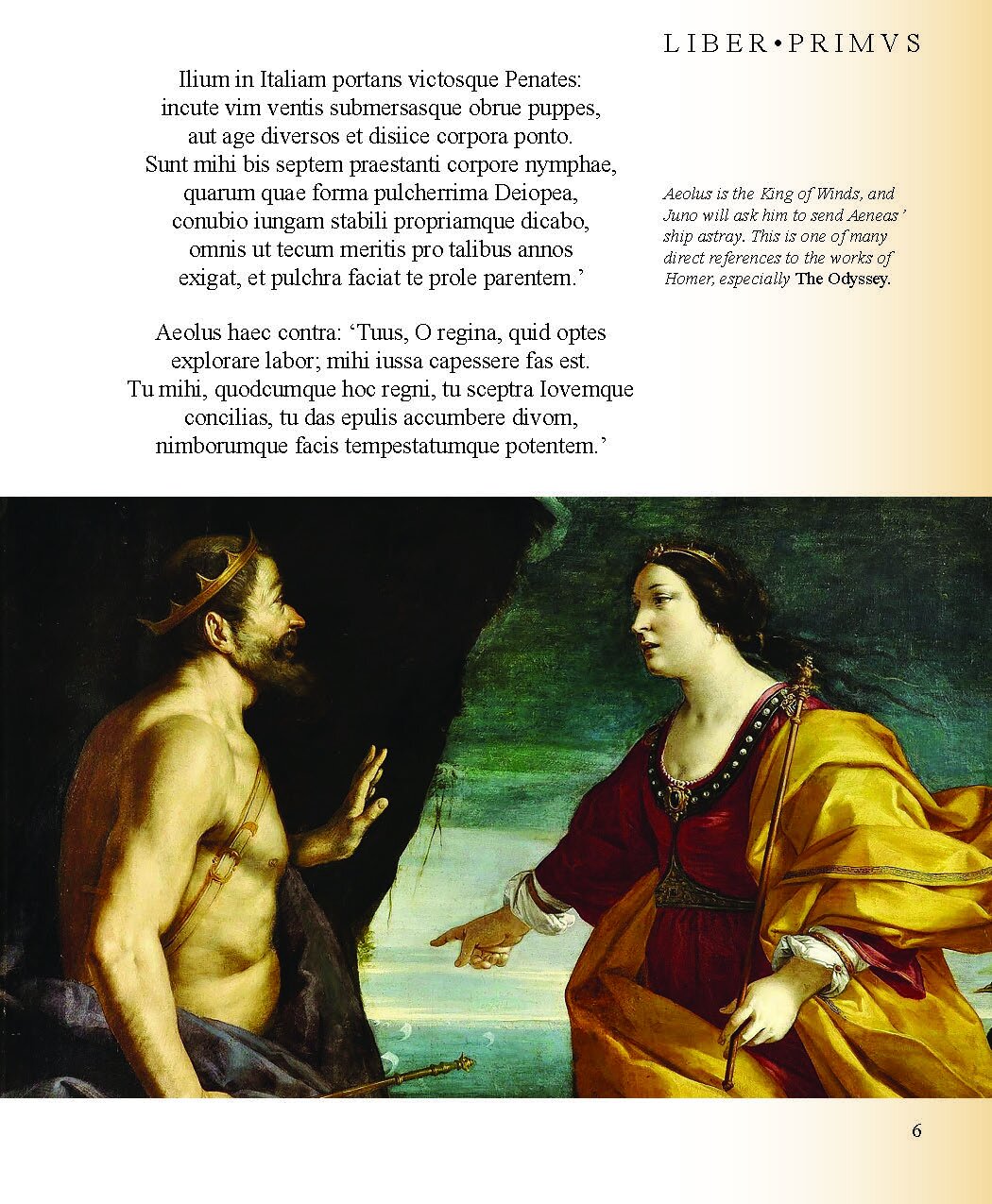
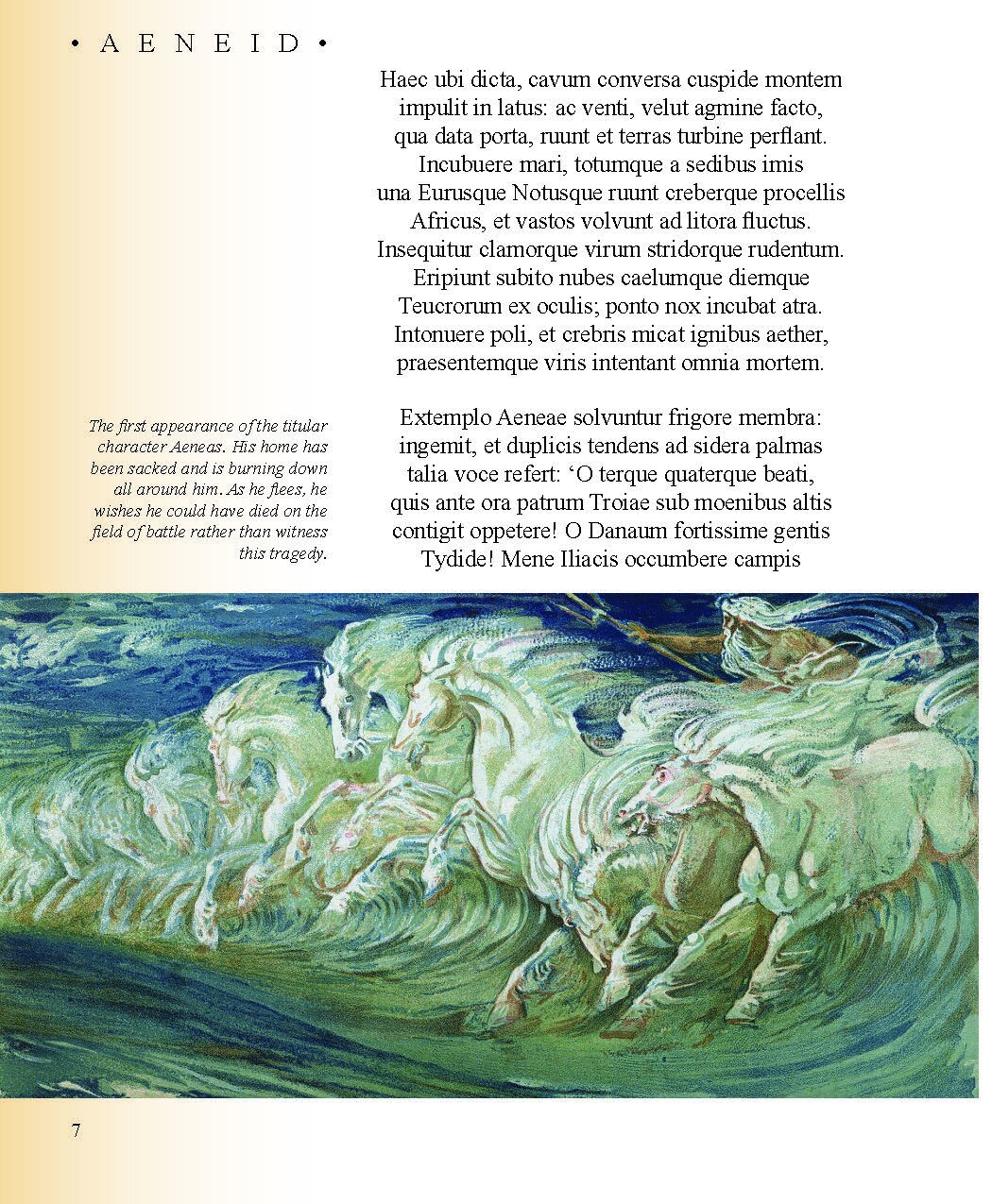
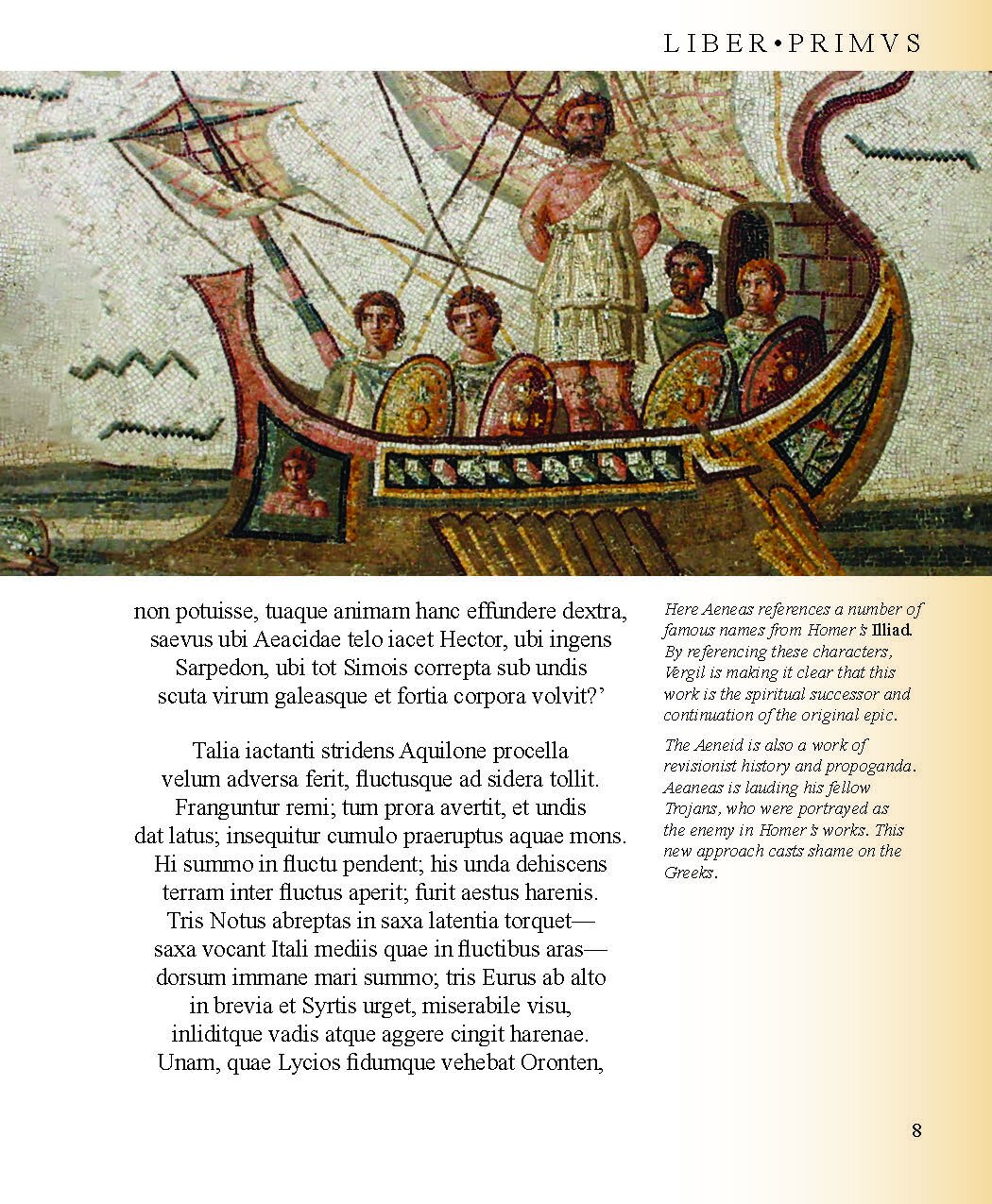
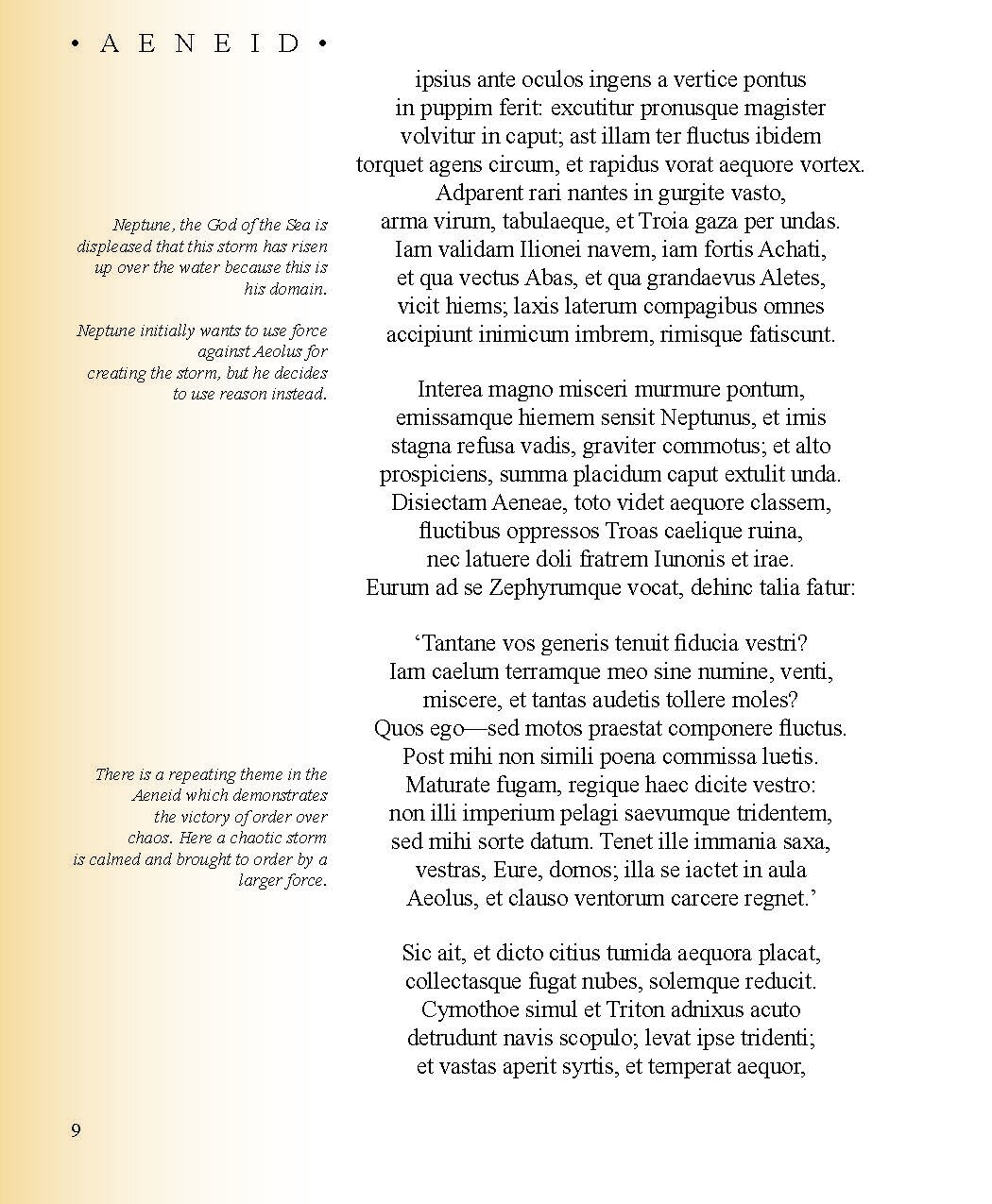
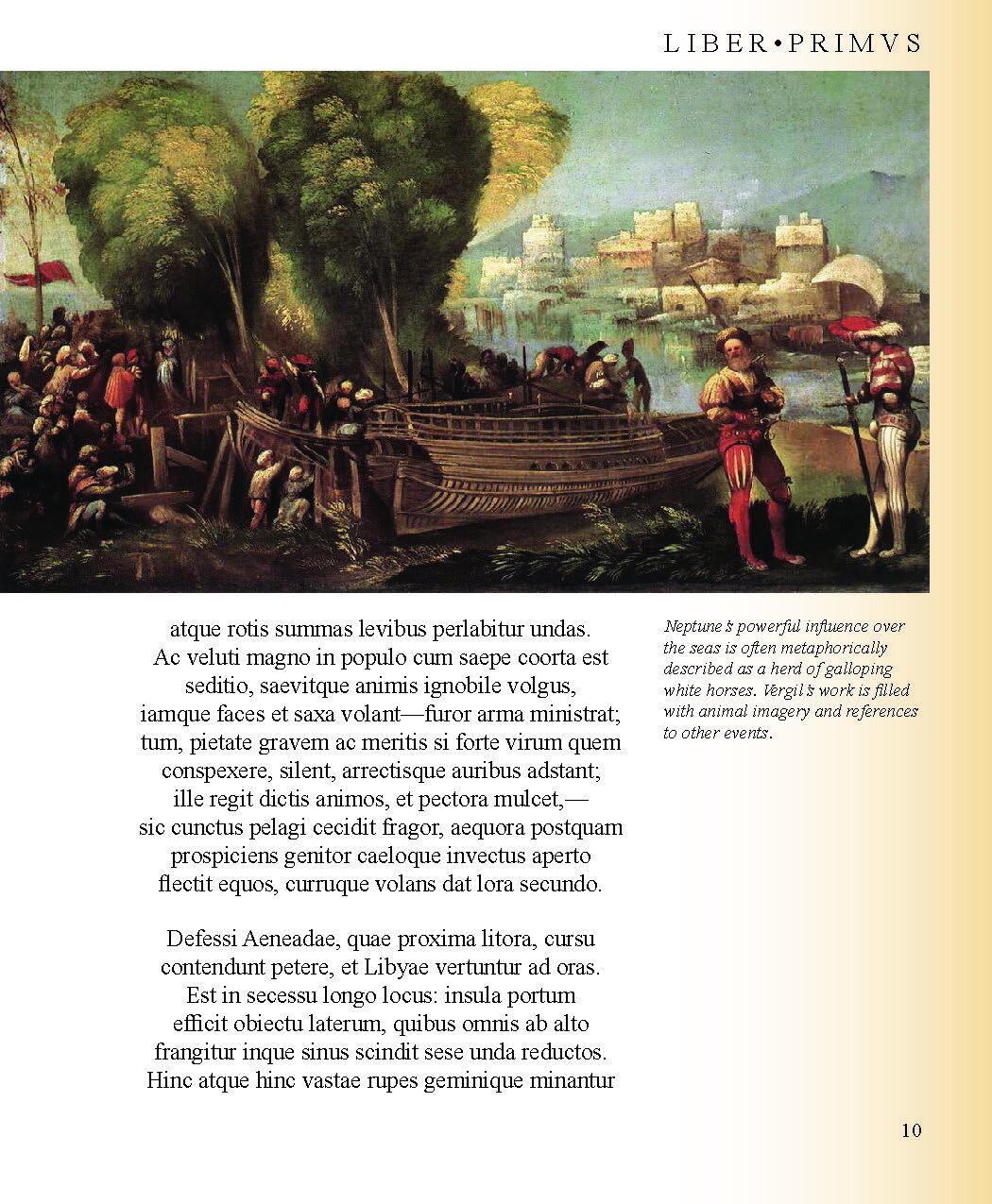
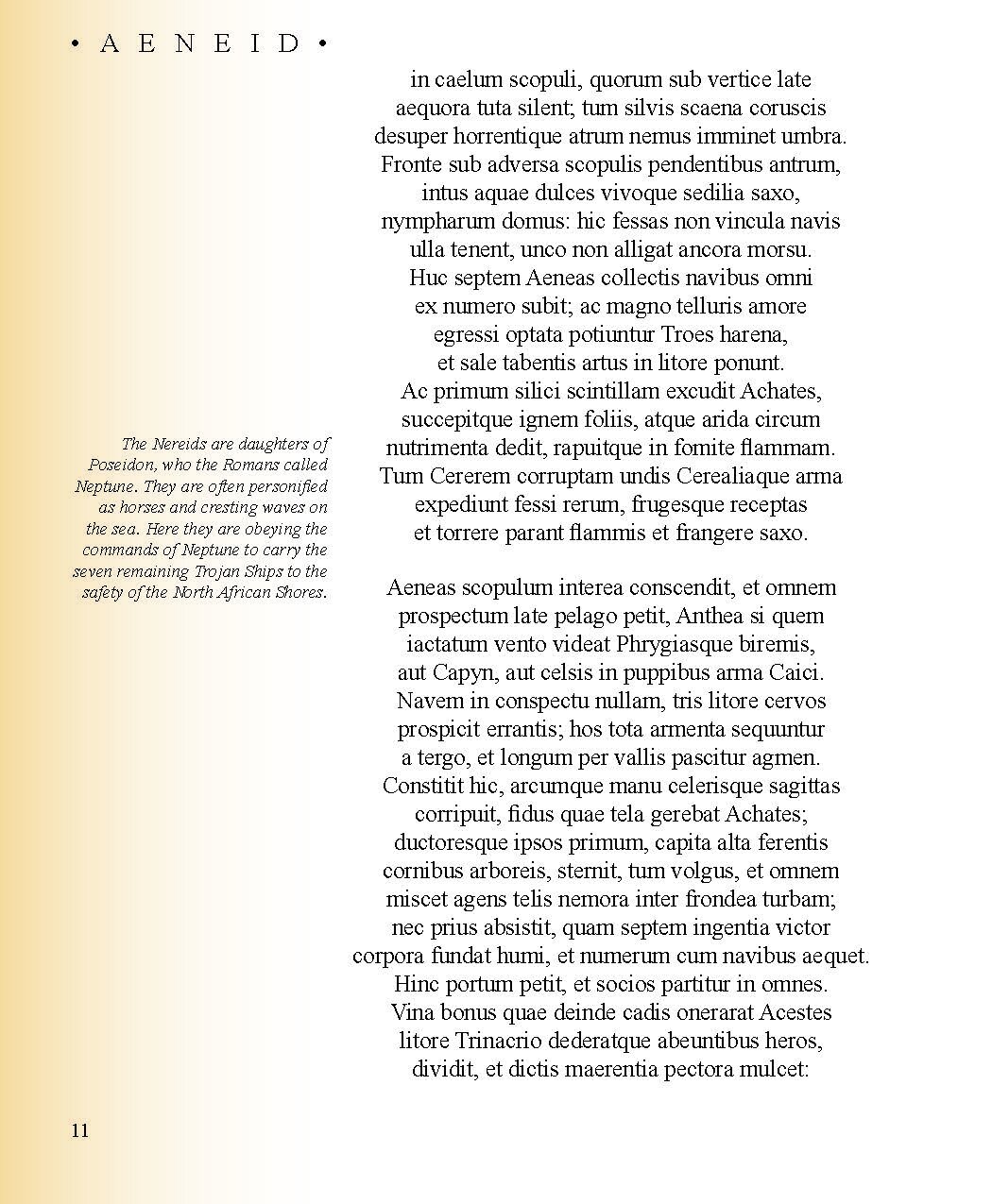
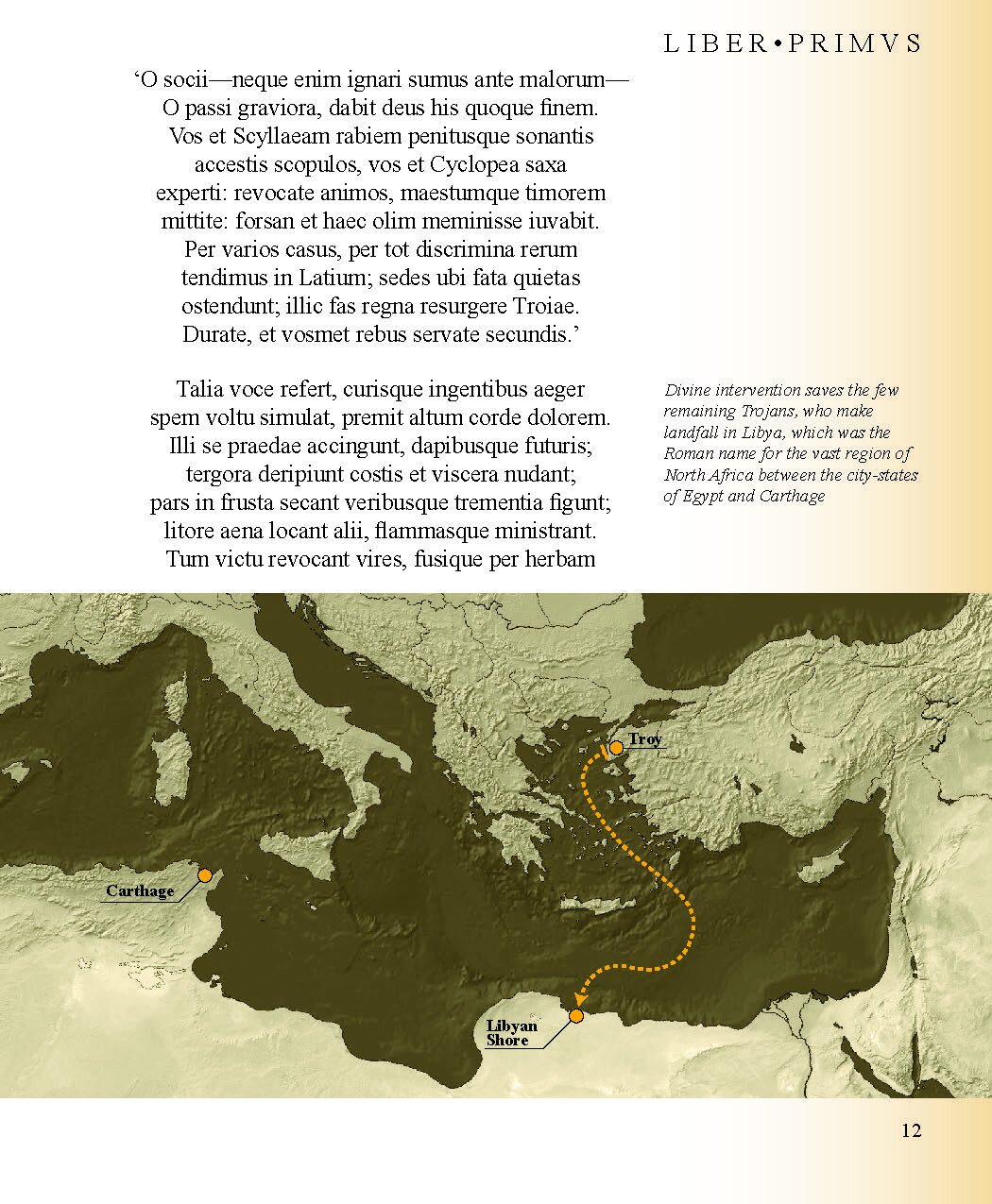
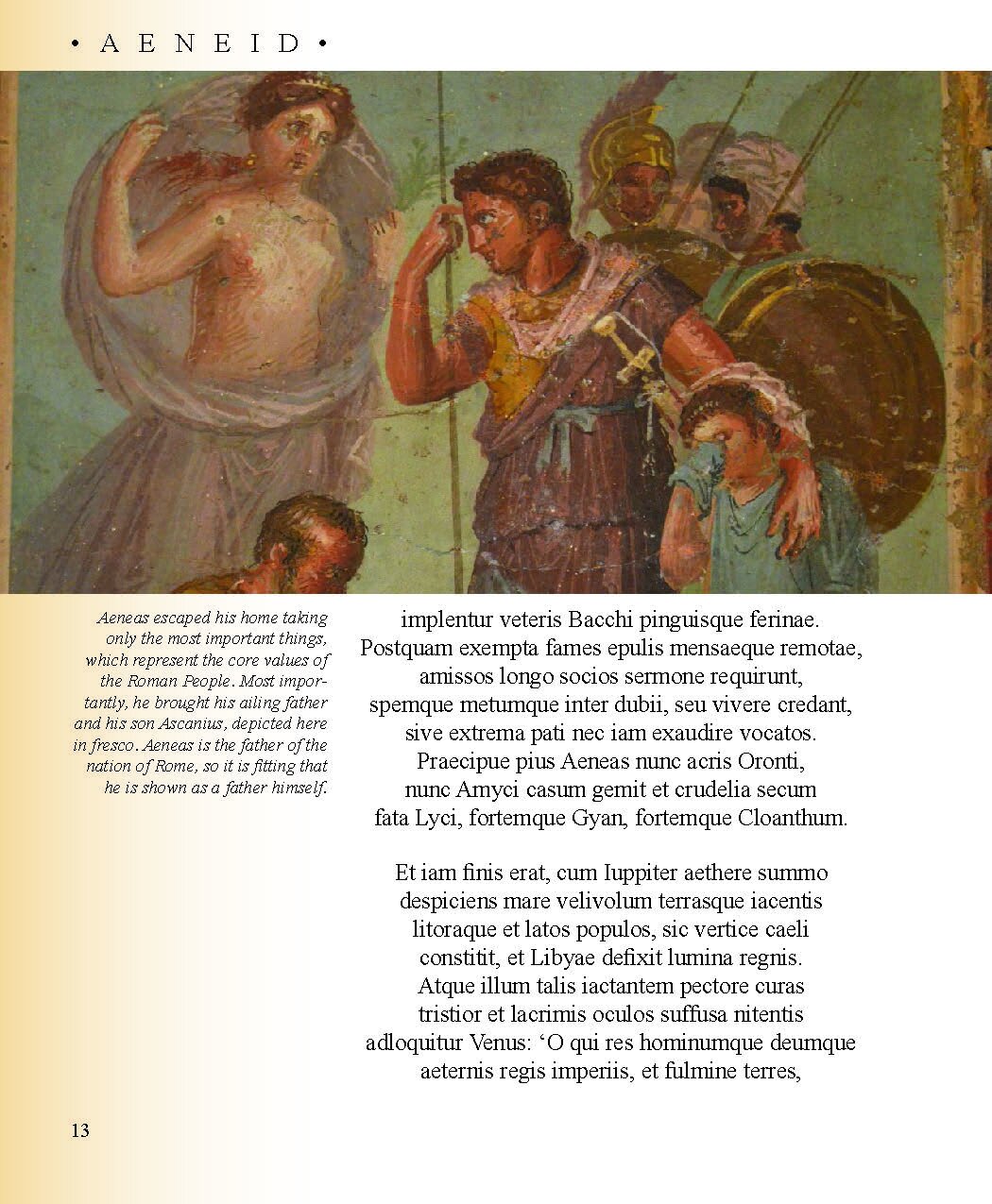
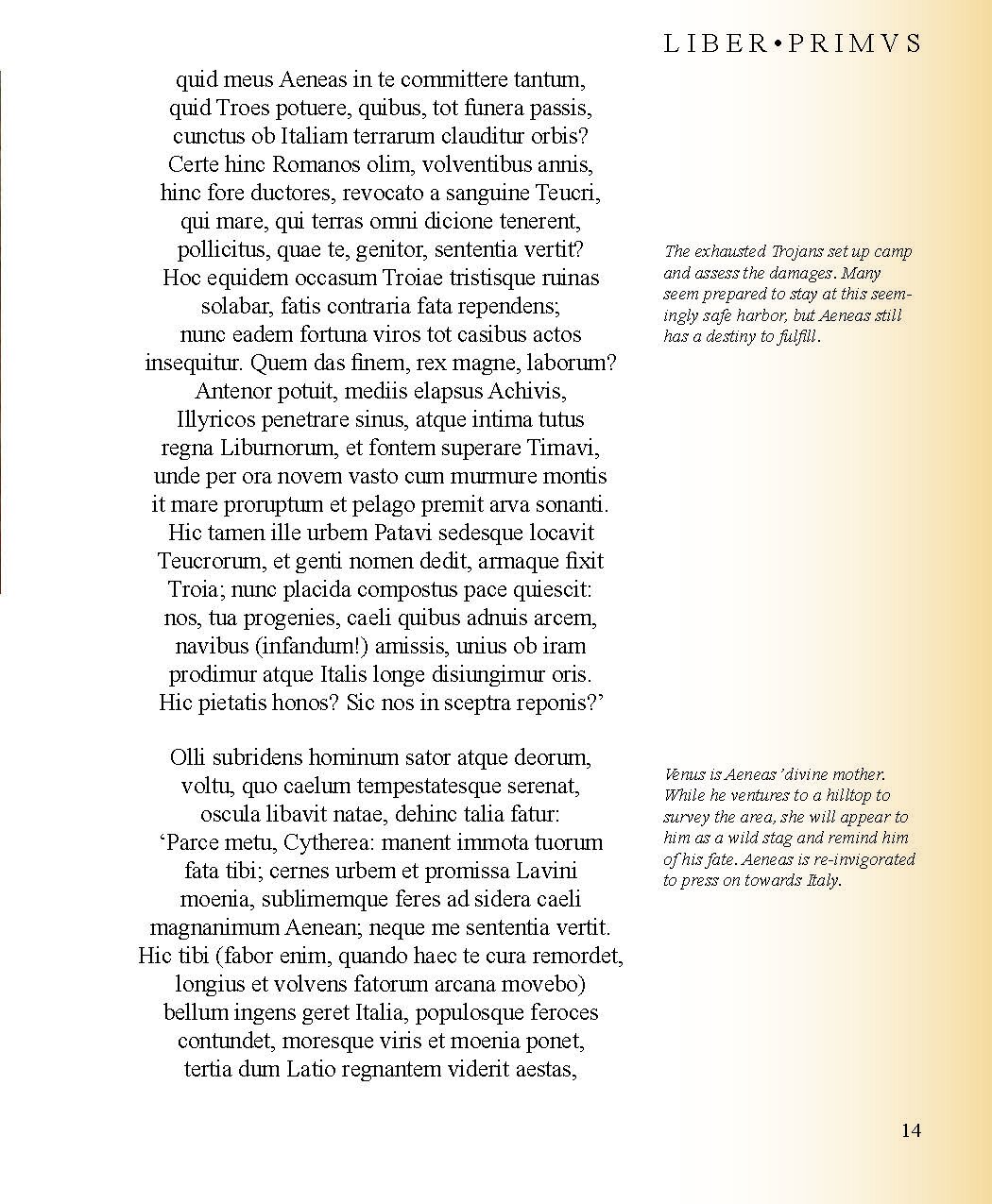
Design Rationale
The book is arranged on 7” by 81/2” pages. The text is illustrated with works of art from different eras which depict scenes from the book. The colour scheme is comprised of dirty yellows and pale orange. Much of the book takes place on the Mediterranean shores of North Africa, which have a similar array of warm colours. The yellow is also reminiscent of aged parchment paper, which matches the age of the work. The book will be approximately 250 pages long, divided among twelve books as well as an index and closing remarks.
The cover design features simplistic designs of various items from the pre-Roman Empire age. The items are either weapons or farming implements. This reflects the predominant theme of the Aeneid, which is the triumph of order over chaos. The work was written in part to reinforce the new reign of Caesar Augustus, who wished to be known as a ruler who ended the civil war and brought growth and prosperity to the empire. The Aeneid reflects this ethos by showing its titular hero escaping a war to build a new nation. The cover uses the same colours as the interior. The basic design of the implements on the cover are intended to resemble the pottery-based artwork which was common at the time.
